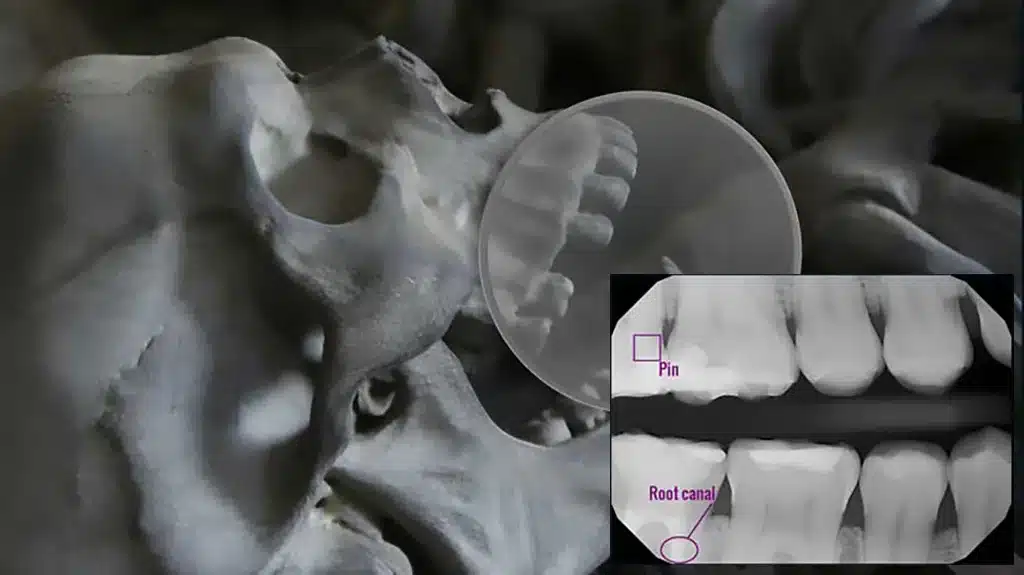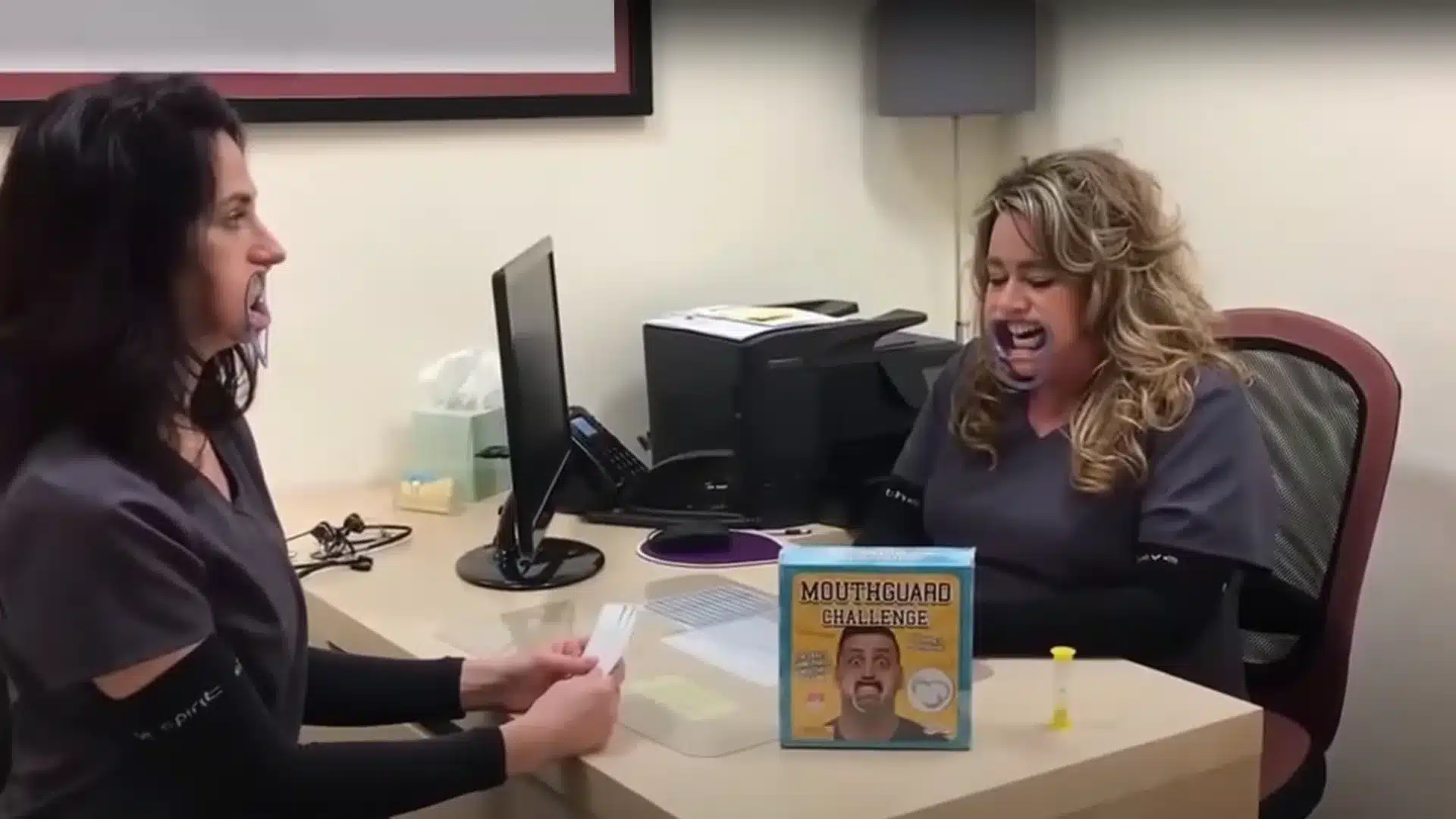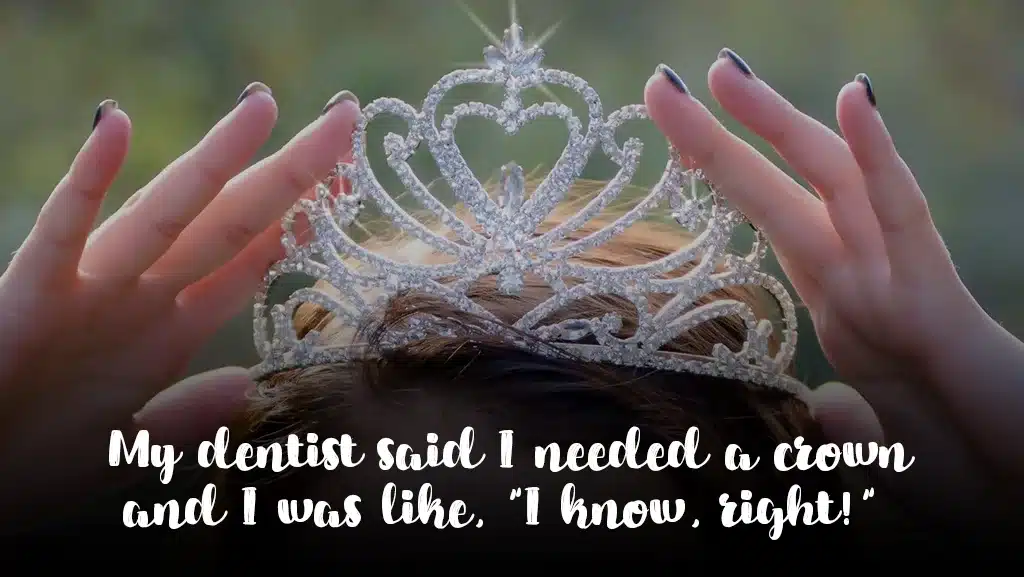Happy Halloween, Tooth Fans!
You may be surprised to learn that dentists enjoy Halloween just as much as the rest of the “normal” population. And no, it’s not because we get more business due to the large number of cavities formed during the heavy sugar consumption this holiday spawns. Although, I have known many people who have pulled out old silver fillings chewing on Sugar Daddys or chipped teeth on jawbreakers . . .
Personally, I really enjoy seeing the variety of costumes that appear at my door each year, especially the more creative ones. And yes, I give out candy to the trick-or-treaters who come to my door, mostly because I don’t want my house to get egged by teenagers who are upset when they receive a toothbrush instead of a sugar rush.
Still, I have my standards. We only give out chocolate because eventually it melts away in your mouth and is much less likely to get stuck in the grooves of your teeth like sticky candies, or chip your teeth like hard candies. Weak justification, I know, but it’s one day a year. And I am a dentist. And chocolate is so tasty.
And if we’re being real about it, in moderation it’s really not the worst thing in the world, particularly if you’re a good brusher and flosser. Perhaps this year I should hand out business cards as well, though, just to be safe. But I digress . . .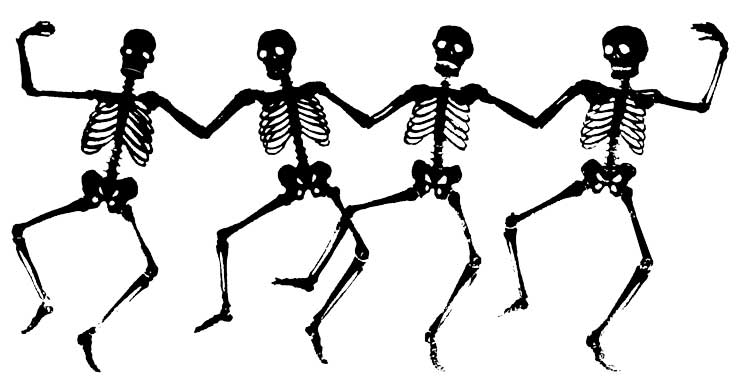
The image that comes to my mind most often when thinking about Halloween is the skeleton. Historically, Halloween started as a Celtic New Year’s celebration, where they thought that the division between the living and the dead was temporarily lifted, and the evil dead spirits could be warded off by dressing like them.
Nowadays we know this to be false; dead spirits can only come back when you look in the mirror and say “Bloody Mary” three times, or when you use a Ouija board. So this is the perfect time to blog about a very interesting, yet somewhat macabre topic in dentistry – forensics!
Crime Solving Dentistry
The very first forensic dentist in America was none other than Paul Revere! He learned the tricks of his trade not from formal training like Dr. Drews and I received; rather, he learned dentistry as a trade from a British dental surgeon named John Baker.
As the story goes, Revere’s friend, Dr. Joseph Warren, was killed in the battle of Bunker Hill and buried in a mass grave. About 9 months later, when the British had evacuated Boston in 1776, Revere went searching for his deceased friend and was able to identify his remains because he recognized a partial he had made for him (out of a walrus tooth and a wire), and thus Dr. Warren was able to receive a proper burial.
Confirming Identity
Identifying the deceased has a powerful impact on friends and family members who would otherwise receive little closure from the loss of their loved one, and I would argue that it is the most important function of a forensic dentist (and the oldest).
The earliest case of identification using a person’s dentition dates back to the year 66 AD when Aggripina, wife of the emperor of Rome, Claudius, had a woman killed and demanded to see her head as proof of murder. She used distinctive dental alignment and tooth coloring to confirm that the soldiers had killed the right person.
[Cassius Dio, C., Earnest, F., Baldwin, H. 1914. Dio’s Roman history. London:W. Heinemann.]
With increasing technology and techniques the identification process has gotten more precise. Typically the identification of the deceased can be accomplished by comparing the radiographs (X-rays) taken after death with the radiographic records from that individual’s dentist. This, of course, begs the question, “If you don’t know who the dead person is, how in the heck can you possibly know who their dentist is?” This is a very valid question, and the answer is that you have to have some missing person who you suspect could be the deceased, and then you can compare their dental records for confirmation.
A full mouth series of X-rays is taken (called an FMX) and compared with the most recent one available. Existing dental work is the easiest way to make a positive identification.
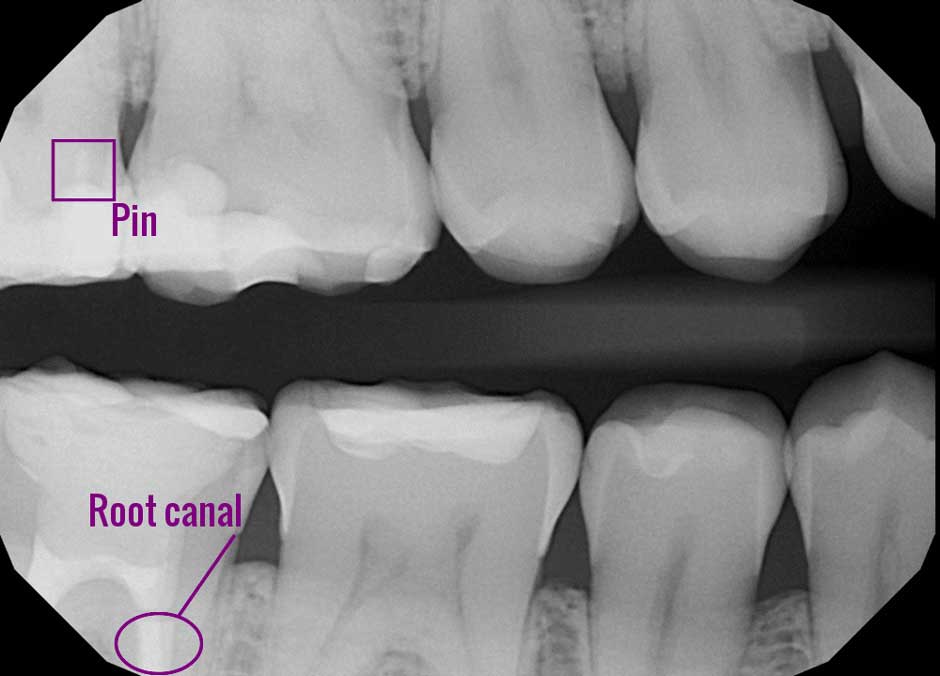
Take this x-ray for example:
Notice how on the lower left side of the image (the patient’s right) there is a root canal with a core buildup, two restorations in front of this tooth, and two restorations on the upper left side of the image, one with a pin.
While there may be other people with this same pattern of restorations, the work itself will also often look very different. And, the more teeth you have to compare, the easier the identification is.
Estimating Age
Determining the estimated age of a victim can be accomplished using the dentition as well, though this is far more accurate on younger individuals (children and teenagers). This is based on the eruption pattern of the teeth. Adult first molars erupt at age 6, second molars at age 12, and third molars vary but usually age 16-18.
The first recorded case of age estimation based on dentition was Louis XVII, who supposedly died of tuberculosis in a Paris prison in 1795. Rumors were that another child had been buried in his place and the future king was still alive. In the year 1846 a lead coffin was found during the a church reconstruction and the remains of a child were examined. Based on bones and tooth eruption it was estimated the child was 15-16, not 10 years old as Louis XVII was. In the year 1897 a relative tried again to search for the coffin and a second child coffin was exhumed. Yet again, dental examination concluded these were the remains of a 16-18 year old (his third molars had fully erupted).
[Amoëdo, O. 1898. L’Art dentaire en Médecine Légale. Paris: Masson et Cie.]
DNA Analysis
The most exciting advance in dental forensic identification is with DNA. As many of you know from watching the Forensic Files every night before you go to bed (ok, maybe that’s just me…don’t judge; Peter Thomas’ voice is monotonous and soothing), DNA evidence is the gold standard of forensic science.
And it turns out that we can obtain DNA from teeth. This is particularly useful in cases where the body may have been so badly damaged that traditional testing modalities don’t work, as is the case with a fire. Teeth can withstand temperatures of over 2,000 degrees Fahrenheit, and the pulp (the living nerve tissue) is encased inside.
Bite Mark Analysis
Identification of suspects can also be aided by dental forensic techniques. This is not as much of an exact science as the previous methods, but it can certainly help, particularly in excluding a person from suspicion.
Bite mark evidence has been used to successfully prosecute suspects in many cases, though sadly it has also been responsible for wrongful convictions as well. Notorious serial killer Ted Bundy was finally convicted thanks to a bite mark he left on victim Lisa Levy’s buttocks. The bite mark analysis was the only non-circumstantial piece of evidence in his case.
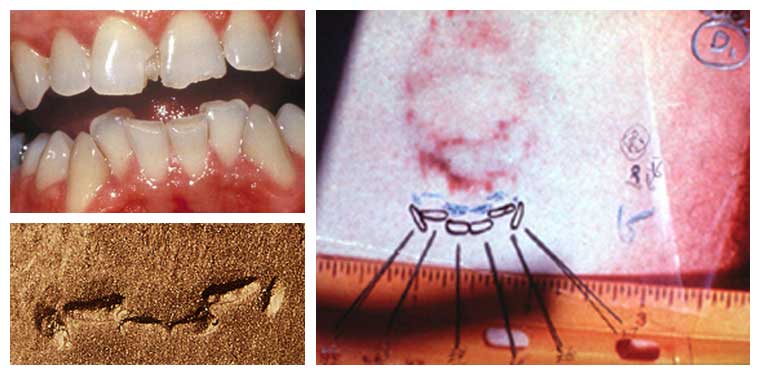
Given the unique pattern of Bundy’s teeth, this is an example where the evidence is much more conclusive and positive identification can be made with some certainty. Not everyone’s dentition is quite so unique, however, and the validity of bite mark evidence has been questioned in recent years.
There are many variables to consider – the soft tissue can move and distort the impression, depending on the depth of the impression it can be difficult to visualize sometimes as well. Bite impressions left in food items have also been used as physical evidence. I don’t have professional training in forensics, but I think in most cases bite mark evidence should be used more like a piece in the puzzle, rather than the smoking gun. There can be a probability of a bite impression matching someone’s teeth, but ultimately it would be best if there were saliva residue that could be swabbed and tested for DNA analysis.
Cheiloscopy
Cheiloscopy (lip print analysis) is a technique that is much less commonly used, but is very effective in confirming a suspect. We all know that our fingerprints are unique to a particular individual, but few people realize that your lip prints are as well. In fact, a person’s lip patterns become distinguishable as early as 6 weeks after conception!

And not only is a lip print unique like a fingerprint is, but it can possibly determine a person’s gender as well. There are patterns which are significantly more common in males and others in females, a characteristic which is receiving a lot of attention because it could significantly narrow the suspect pool to be able to rule out half the population.
There aren’t as many cases where a criminal leaves behind an intact lip print, and there isn’t a database of lip prints to compare against like we have in dactyloscopy (fingerprint identification) so this type of identification is done best when there is a suspect in mind who can provide a sample for comparison.
In 1987 there was a bank robbery where the male perpetrator dressed as a woman, lipstick and all, and ran into the glass door on his way out. Thanks to the lipstick, a perfect lip print was left, allowing the FBI to make a comparison which led to the conviction of the suspect. Now that was probably the most costly application of lipstick in human history!
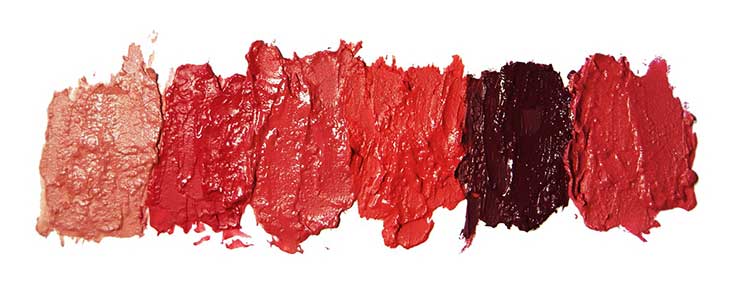
While I hope that forensic dentistry never plays a role in the lives of you or your loved ones, it is still fascinating to learn about, particularly at this time of year when we all are a little more likely to indulge in the creepy and the morbid.
If you have some spare time, and a strong stomach, there are many interesting articles on this topic to read more about. If you’re interested in forensic dentistry (also known as forensic odontology), I recommend checking out the The American Board of Forensic Odontology and the American Society of Forensic Odontology as well as the resources listed below.
And if you’re a nerd like me, you might prefer reading about identifying people by their teeth this Halloween to making new holes in your own teeth by eating all that candy … just sayin. 😉 Stay safe, my friends, and Happy Halloween!
Love & Tricks (not treats),

Kristie Lake, DMD
Resources
- Cassius Dio, C., Earnest, F., Baldwin, H. 1914. Dio’s Roman history. London:W. Heinemann.
- Balachander N, Babu NA, Jimson S, Priyadharsini C, Masthan KM. Evolution of forensic odontology: An overview. J Pharm Bioallied Sci. 2015;7(Suppl 1):S176-80.
- Amoëdo y Valdes Oscar, L’Art dentaire en Médecine Légale [Dental Art in Legal Medicine], Masson et Cie (ed.), Paris, 1898.
- Girish KL, Rahman FS, Tippu SR. Dental DNA fingerprinting in identification of human remains. J Forensic Dent Sci. 2010;2:63–8.
- Sharma P, Saxena S, Rathod V. Cheiloscopy: The study of lip prints in sex identification. J Forensic Dent Sci [serial online] 2009 [cited 2018 Oct 26];1:24-7.


